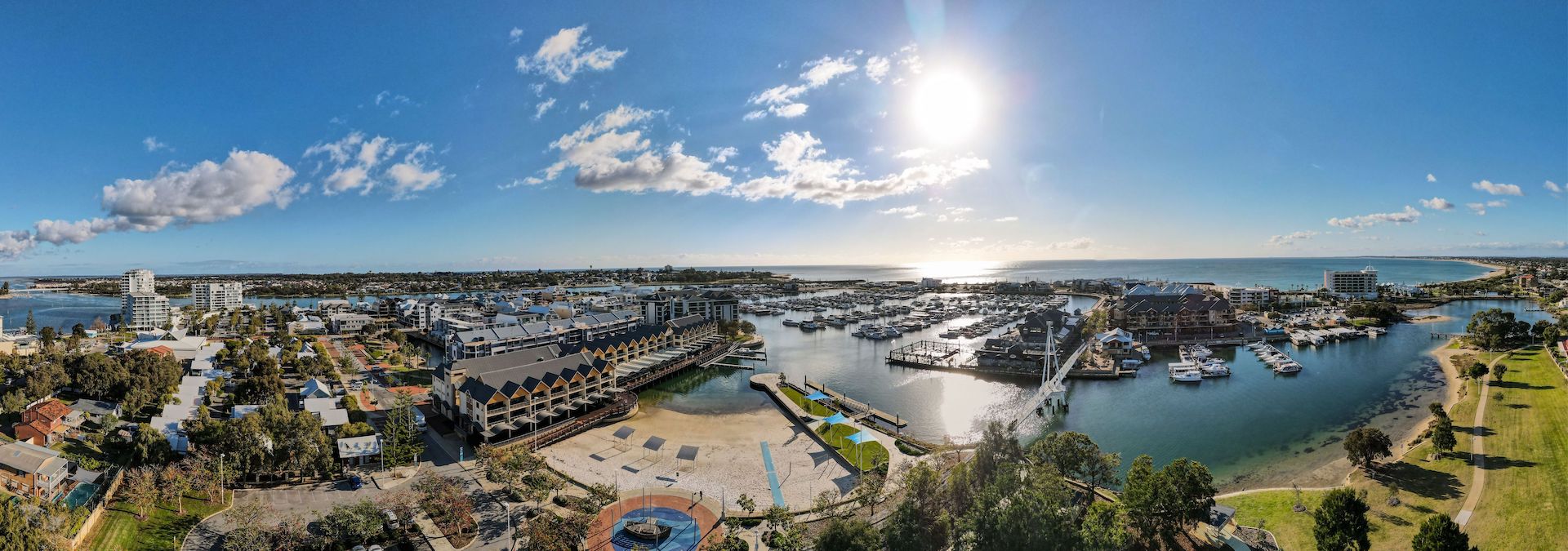About Mandurah

Mandurah (Mandjoogoordap)
The first people of the region were the Bindjareb people of the Noongar Nation, who named the locality Mandjoogoordap (now Mandurah) which translates to 'meeting place of the heart'.
The Aboriginal community of Mandurah are custodians of the land which centres on our waterways, rivers, lakes, the estuary, the ocean and coastal plains creating an historic thoroughfare in Mandurah today.
The Pirate Ship Mandurah acknowledges the Traditional Custodians of Country throughout Australia. We recognise their strength and pay our respects to Elders past, present and emerging. recognises their rich cultures and continuing connection to land and waters.
Mandurah is the perfect place for exploring the Mandurah and the Peel region.
As Western Australia's largest regional city, Mandurah is known for its beautiful waterways and relaxed holiday atmosphere. The waterways are absolute paradise for boating, with an abundance of wildlife and many places to explore. For those who enjoy being on the water, no trip to Mandurah would be complete without a pirate themed cruise through the canals and the chance to spot bottlenose dolphins. The Peel-Harvey estuary has a population of approximately 90 resident dolphins and another 40 that visit occasionally from coastal waters.
The Mandurah Estuary and Peel Inlet covers an area twice the size of the Sydney harbour, but the spectacular waterways and pirate adventures are far from the only attraction our coastal paradise has to offer. Mandurah is also WA’s home of crabbing, with a huge population of crab, and the yearly ‘Crabfest’ festival which attracts thousands of visitors.
An hours drive South of Perth, making an ideal weekend getaway, or a great spot to stop by en-route from the Busselton or Margaret River region. Graced with endless stretches of pristine coastline, tree lined walkways, and safe swimming beaches Mandurah is a perfect holiday destination for the whole family.
History & Development
The first European to settle in the area was Thomas Peel, with the Peel region being named in his honour. The city's name was derived from the Aboriginal word 'mandjar' which means 'meeting place'. On December 15, 1829, 169 settlers arrived in the area to take up the available 250 000 acres reserved for the town.
In 1850 the town was connected to Perth by a coastal road, then by rail in 1893. In the 1950s, Mandurah was nothing more than a tiny fishing village but the establishment of an alumina refinery at nearby Pinjarra in the early 1970s aided the town's growth. Today, the city is one of the fastest growing in the state, as multi-million dollar resorts and housing estates take advantage of the spectacular water on our doorstep and Mediterranean climate.
Development is currently underway on the Eastern foreshore to include an enclosed swimming area and huge renovations to the Smart St mall area. Exciting times are ahead for our ever growing coastal paradise.
Mandurah Canals
Mandurah is a water based town with an Ocean Marina near to the town and a foreshore surrounded by beautiful waterways which feed into the Indian Ocean with plenty of family friendly beaches. The man made canal estates provide luxury homes and a range of accommodation options for visitors. With many homes boasting a private jetty and a huge array of public mooring options to choose from on a sunny day you will find many of the locals en-route for a spot of lunch offering a hearty wave and a friendly smile.
Getting Here
Drive, train or bus, we have all your options covered in our Getting to Mandurah Guide.
Things To Do
Chilling out by the beach, taking a ride on the Little Train or joining us for a Pirate Canal Cruise, we have everything you need to know for Things To Do in Mandurah, let us help you make the most out of your trip.
